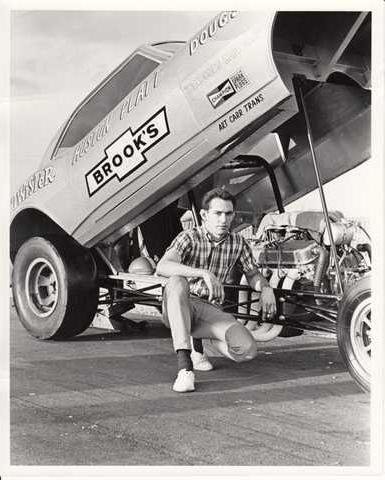The Georgia Racing Hall of Fame has recently acquired a famed racecar that was thought to be lost until a few years ago.
Known as the Dixie Twister, the Huston Platt-owned car had disappeared after a deadly accident on March 2, 1969, that killed 12 and injured more than 40 at the Yellow River Drag Strip in Covington.
Randall Davis, former crew member of Platt, eventually decided to start looking for the car.
According to local racing historian Gordon Pirkle, after years of searching, Davis found the car in Nova Scotia, Canada, 34 years after it disappeared. He then spent more than $80,000 remodeling and refurbishing it to its original glory.
The 1969 Camaro has come to represent a major mile marker in professional racing safety standards since the historic crash.
The accident occured when a race spectator at the Yellow River Dragstrip "dropped his beer" and was "leaning down onto the track," according to Pirkle. As the Dixie Twister rounded the corner and saw the spectator he tried to slow down by releasing his rear parachute.
"By the time the Dixie Twister tried to stop and released his parachute the spectator got yanked up in it and it killed him instantly," Pirkle said. "Then it shot the car up into the stands. The top came off and it exploded, which is what killed people."
The tragedy was especially hard on the cars' driver, Platt, who after surviving the wreck decided to never race again.
"It just killed him," Pirkle said, "especially since a kid got killed. She lived a street over behind him and it just killed him."
Due to the accident, racing safety standards were more closely inspected for one of the first times in racing history. Up until that time spectators at the Yellow River Drag Strip had been allowed to stand beside the track on ground level. Yellow River Drag Strip eventually closed.
"The track didn't have concrete walls beside it then. It was just metal fencing. The spectators were standing there during this race," Pirkle said.
"Now you go to a race and the spectators are way away from the track. You have all the concrete bearings. It is almost impossible for the cars to get up in there now."
Pirkle compares the positive outcomes of the 1969 Dixie Twister accident to the more recent outcomes of NASCAR racer Bobby Allison's accident, which further improved protection for spectators.
"In 1987, Bobby Allison's car at Talladega [Superspeedway] ran off the track and almost went over the fence, but it came back," Pirkle said. "If that had gone over the fence could you imagine what would have happened with over 200,000 people there? Now all racetracks have heavier cables and thicker fencing."
Pirkle suggests that sometimes it takes a crash for there to be better accident prevention guidelines.
Platt was reunited with the Dixie Twister before he passed away in November 2011. Davis brought the car to him and asked for approval to put Platt's name on it in recognition of his racing days.
"They say [Platt] just lit up," Pirkle said. "He started going to the car showings and races to sign autographs."
The Dixie Twister is expected to be on display at the local museum until the end of February.

